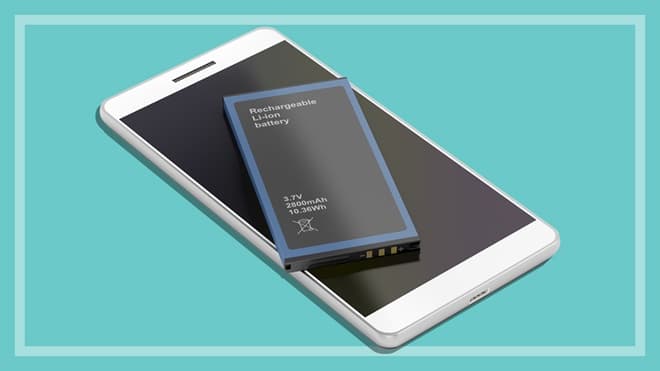Hungarians are increasingly embracing digital technologies — from smartphones to electric vehicles, from online work to internet entertainment. But the more devices we surround ourselves with, the more we depend on batteries. And although batteries are becoming more powerful, most users find that their devices start to “live” less over time. How can you extend your battery’s lifespan? And are there universal tips that work for phones, laptops, and even electric vehicles? Let’s break it down.
Why Do Batteries Lose Capacity?
The main reason for battery degradation is chemical wear. Each charge and discharge cycle slightly reduces battery capacity. Over time, this impacts a device’s battery life. But it’s not just about the number of cycles. Even more important is how exactly you charge the device, how you use it, and under what environmental conditions.
Hungarian users increasingly rely on smartphones not only for communication but also for navigation, shopping, and leisure. Mobile entertainment is especially popular: streaming, gaming, and online casinos, where stable performance without charging for several hours is crucial. Given the growing interest in platforms offering alacsony befizetes casino, users are spending more time online, which increases battery load and requires a smarter usage approach.
Smartphone: Don’t Let It Hit Zero
The smartphone is one of the most frequently charged devices. The main rule here is to avoid extremes. Modern lithium-ion batteries dislike being fully discharged to 0% or fully charged to 100%. The optimal range is between 20% and 80%. This is especially important if you actively use your phone throughout the day and keep background apps running.
Charging your phone overnight is a common habit, but it can be harmful. Constantly maintaining a 100% charge can overheat the battery and accelerate wear. If you charge overnight, it’s best to use the “optimized charging” function available on most modern Android and iOS devices. Or plug it in during the day for short intervals.
The charger you use also matters. Fast charging is convenient but frequent use increases thermal stress on the battery. It’s better to alternate between fast and regular charging.
Laptop: Smart Plug-in Usage
Laptops are trickier. Many Hungarians use laptops as their main workstations — especially in the era of remote work. Devices are often plugged in for 8–10 hours straight. It’s convenient, but harmful for the battery.
If your laptop runs on AC power most of the time, it’s better to activate battery saver mode or disable charging in BIOS/UEFI, if such an option is available. Some models (e.g., Lenovo, Asus) allow you to limit charging to 60–80%. This helps keep the battery in good condition for years.
Laptops also don’t like overheating, especially during summer. Use cooling pads and avoid soft surfaces that block ventilation.
Electric Vehicle: Avoid Full Charge/Discharge
Electric vehicles are a bit different. Their batteries are designed for thousands of cycles, but moderation still matters. A full 100% charge is acceptable before long trips, but for daily use, it’s better to stick to 80%. Also, avoid letting the battery run down to 0% — for many EV models, critically low charge can accelerate cell degradation.
Hungary is actively developing EV infrastructure, especially in Budapest and major cities. This means you can plan charging with battery preservation in mind, not just range.
Additionally, during cold weather, it’s a good idea to warm up the battery before driving. Many EVs have built-in preconditioning systems activated via mobile apps.
Heat and Cold — Battery Enemies
One universal tip for all devices: avoid extreme temperatures. Summer heat or winter frost accelerates battery wear. Don’t leave smartphones and laptops in cars or under the sun. It’s best to park EVs in the shade or use temperature-controlled garages.
If your device heats up during use — whether it’s mobile gaming, streaming movies, or playing at a live online casino table — it’s time to take a break. Overheating isn’t just uncomfortable, it causes internal wear.
Myths vs Reality: Should You Fully Discharge?
Some users still believe it’s necessary to fully discharge a device to 0% once a month for “calibration.” This rule was relevant for older nickel-cadmium batteries, but it doesn’t apply to modern lithium-ion ones. Full discharge is more harmful than helpful. If you do want to “refresh” the battery reading, it’s enough to let it drop to 10–15%, then charge to 100% once every few months.
Also, avoid using non-original chargers. They can not only damage the battery but also pose safety risks. It’s better to invest once in a quality charger than to replace a battery — or the entire device — later.
Conclusion: Care Equals Longevity
Extending battery life is absolutely possible — and even easy. The key is balance. Don’t charge to full, don’t discharge to zero, avoid overheating and cold, use quality chargers, and don’t keep devices constantly plugged in.
For modern Hungarian users whose digital lives are packed with online work, mobile entertainment, and digital services — from news to online casinos — battery care is no longer a recommendation, but a necessity. The longer your device runs without charging, the more comfortable your life becomes.




Average Rating